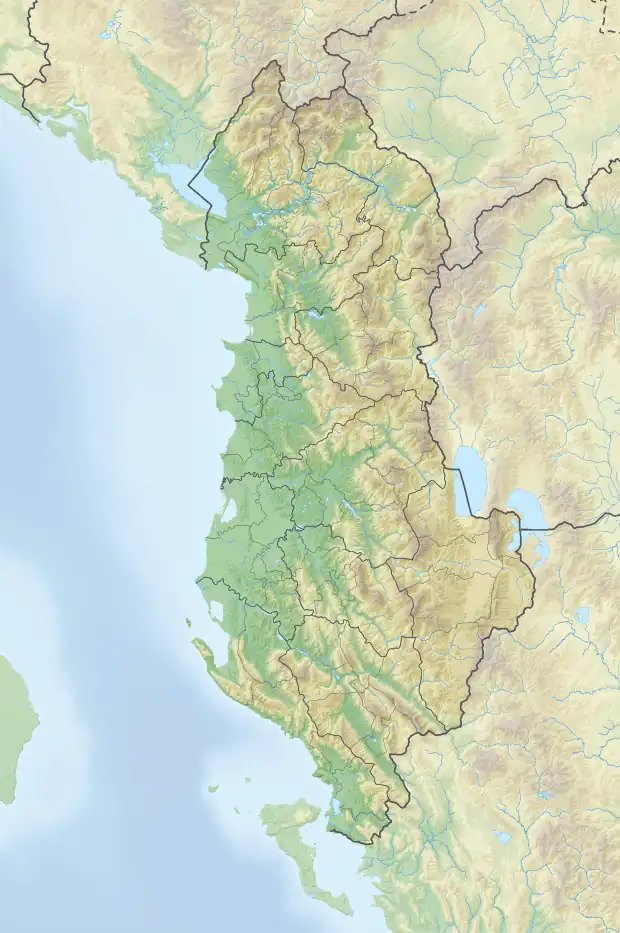| Gashi Valley | |
|---|---|
| Lugina e Gashit | |
.jpg.webp) Alpine pasture of Balçina e Luzhës | |
 Location within Albania  Gashi Valley (Europe) | |
| Location | Kukës County |
| Nearest town | Tropojë |
| Coordinates | 42°25′36″N 20°05′45″E / 42.42667°N 20.09583°E |
| Area | 3,000 hectares (30 km2) |
| Governing body | National Agency of Protected Areas |
| Official name | Primeval Beech Forests of the Carpathians |
| Type | Natural[1] |
| Criteria | ix |
| Designated | 7 July 2017[2] |
Gashi Valley (Albanian: Lugina e Gashit) is a strict nature reserve located in northern Albania. Along with Rrajcë, it forms the transnational Ancient and Primeval Beech Forests of the Carpathians and Other Regions of Europe, encompassing 94 nature sites, in 18 European countries.
Geology
Spanning 3,000 hectares (30 km2) and situated in the basin of the Gashi River, the valley is characterized by a rugged and fragmented alpine terrain made up of magmatic and limestone formations.[3] Other prominent features of the valley include glacial formations such as cirques, ridges and rapids. The region has a mountainous Mediterranean climate with harsh winters and cool summers, abundant clean waters, and glacial lakes formed in cirques and morainic deposits.[4]
Biodiversity
The valley is host to a diverse range of plant and animal life, including beech forests (with a mix of spruce, mountain maple, cypress, hornbeam), alpine meadows (blueberries are extensively cultivated), many endemic and subendemic plants, and protected mammals such as the brown bear, racoon, goat, wild boar, roe deer, etc.
Culture
The Gashi valley region is rich in cultural heritage, with many symbolisms from, Eposi i Kreshnikëve, Muji and the mountain fairy, the legend of Mic Sokoli and others. The region is recognized for its folklore, specifically the famous Tropojë Dance (Albanian: Vallja e Tropojës), which is a candidate for inclusion in UNESCO's Intangible Cultural Heritage tentative list. Worthy of mention are the many ethnographic values in traditional clothing, most notably the Xhubleta, an undulating, bell-shaped folk skirt, hung on the shoulders using two straps, worn by local women since at least the 17th century.[5]
See also
References
- ↑ "Primeval Beech Forests of the Carpathians and Other Regions of Europe". whc.unesco.org.
- ↑ "Rrjeti i Zonave të Mbrojtura në Shqipëri" (PDF). cbd.int. Retrieved 1 January 2014.
- ↑ PPNEA. "Protect nature Invest for the future - Gashi" (PDF). ppnea.org. p. 8.
- ↑ Qiriazi, Perikli (2001). Gjeografia Fizike e Shqipërisë. Tiranë: Ideart. pp. 146–147. ISBN 978-99956-29-80-9.
- ↑ Selami Pulaha; Seit Mansaku; Andromaqi Gjergji (1982). Shqiptarët dhe trojet e tyre. 8 Nëntori. pp. 136–138.